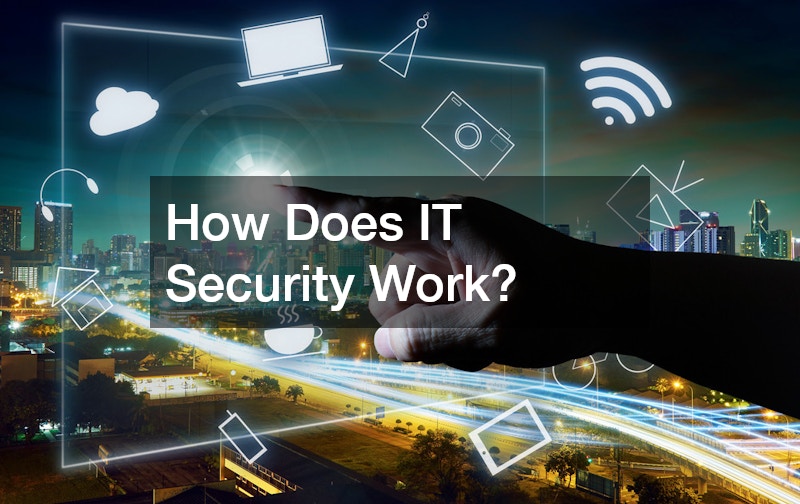In today’s rapidly digitizing world, IT security has become an essential part of any organization’s strategy to protect its data and operations. The rising frequency of cyberattacks and data breaches has underscored the importance of robust IT security measures. The field of IT security encompasses various technologies, processes, and practices aimed at safeguarding networks, devices, programs, and data from attack, damage, or unauthorized access. Whether you run a small business or manage a large corporation, understanding how IT security works is crucial to ensure the confidentiality, integrity, and availability of your information. This post dives into the intricate facets of IT security and highlights why it is a growing necessity, particularly for businesses in areas like Pittsburgh, PA.
Protecting Information Systems
At its core, IT security involves a comprehensive approach to protecting information systems from unauthorized access and harm. This begins with understanding potential vulnerabilities within an organization’s network infrastructure. Traditional IT security strategies focus on protecting the perimeter of a network through firewalls and intrusion detection systems. However, as cyber threats become more sophisticated, IT professionals must employ a multi-layered defense strategy that includes advanced threat protection, user authentication, and real-time monitoring. This multifaceted approach helps detect and mitigate threats before they can cause significant damage.
Managing Risks
Another integral component of IT security is risk management. Identifying, assessing, and mitigating risks is a foundational part of the IT security process. Companies must regularly conduct security assessments to understand the potential risks and vulnerabilities that could impact their operations. Once risks are identified, businesses can prioritize them based on their potential impact and likelihood, and deploy measures to address them accordingly. This ongoing evaluation ensures that organizations can adapt to new threats and minimize the potential for data breaches and system downtime.
Increasing Employee Awareness
Employee awareness and training are often overlooked but are critical aspects of IT security. Many cyberattacks exploit human error, such as weak passwords, phishing scams, and inadvertently downloading malicious software. Therefore, training employees to recognize and respond to security threats is an essential preventative measure. Regular workshops and updates on the latest threats can significantly reduce the likelihood of successful attacks. Cultivating a culture of security awareness within an organization is as important as deploying technical defenses, as it empowers employees to take an active role in protecting the company’s digital assets.
Understanding Evolving Technology
Security technologies and tools are evolving rapidly to counter the sophisticated nature of modern cyber threats. Encryption, for example, has become a vital tool for ensuring data privacy during transmission and storage. Additionally, the rise of technologies like Artificial Intelligence (AI) and Machine Learning (ML) is revolutionizing IT security by enabling automated threat detection and response. These advanced technologies can analyze vast amounts of data to identify anomalies and potential threats in real time, greatly reducing the response time to incidents. Companies dealing with sensitive data, such as those in IT security in Pittsburgh, PA, can greatly benefit from integrating such technologies into their security frameworks to stay a step ahead of cybercriminals.
Adhering to Regulations
The regulatory landscape is also an essential driver of IT security practices. Laws and regulations, such as the General Data Protection Regulation (GDPR) and the Cybersecurity Information Sharing Act (CISA), set standards for data protection and privacy. Compliance with these regulations not only helps organizations avoid legal penalties but also enhances their reputation and trustworthiness with customers. Adhering to these standards entails implementing precise security controls, conducting frequent audits, and maintaining transparent data protection practices. Understanding and aligning with these regulations is crucial for businesses seeking to maintain security and operational efficiency.
IT security is a complex, multi-faceted domain that requires a strategic blend of technology, policy, and human factors to effectively safeguard digital assets. As the threat landscape continues to evolve, businesses need to continuously review and upgrade their security measures. Staying informed about the latest trends and technologies, cultivating a culture of security, and ensuring regulatory compliance are key strategies for maintaining robust IT security. For businesses, including those focusing on IT security in Pittsburgh, PA, prioritizing security is non-negotiable for ensuring longevity and success in a digital-first world. Embracing an agile, proactive approach to IT security can make all the difference in protecting your business from the ever-present threats in cyberspace.
.





